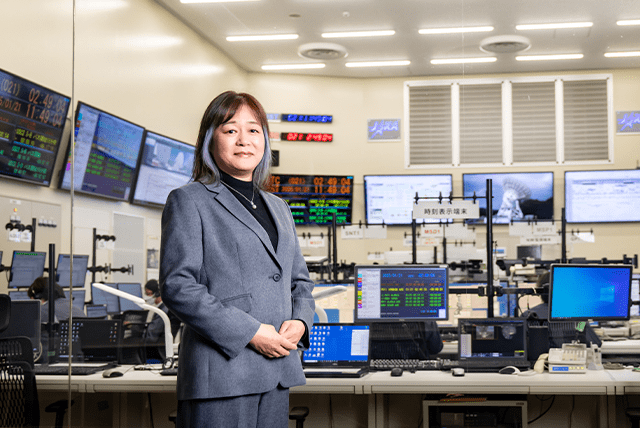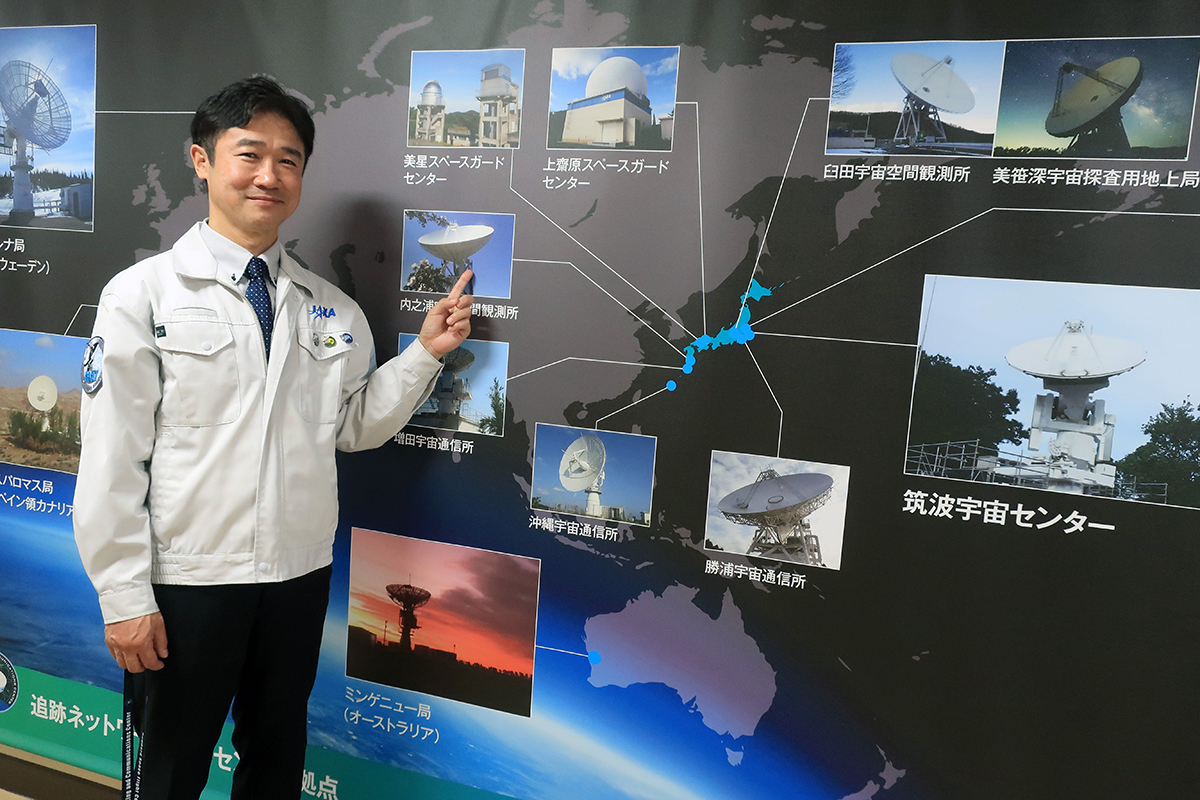Greetings from the Director
As of April 1, 2025, I have assumed the position of Director of the Space Tracking and Communications Center (STCC) of JAXA.
I would like to take this opportunity to briefly introduce the mission and activities of the STCC.

Once satellites and probes are launched into space, communication with them can be conducted exclusively via radio waves from Earth. It is the mission of the STCC to continuously steer large parabolic antennas on the ground to establish communication with these rapidly moving satellites and probes, while accounting for factors such as the Earth’s rotation.
Furthermore, we receive telemetry data to monitor the health status of satellites, transmit command signals to control their operations, acquire ranging data to determine when and where the satellites are located, and receive large volumes of mission data observed by the satellites and probes.
To carry out these operations without interruption, 24 hours a day, 365 days a year, we perform daily maintenance as well as system failure response.
In addition, we are actively working on the renewal of aging equipment, the development of next-generation technologies, and the implementation of advanced systems*1 that will serve the future of space exploration.
Moreover, to ensure the safety of human space activities, we work in cooperation with national authorities to monitor the space environment using Space Situational Awareness (SSA*2) systems and conduct collision risk analysis between satellites and space debris.

I joined the predecessor of JAXA, NASDA*3, and have since been engaged in various roles including the maintenance and management of ground station*4 facilities, technological research for future ground systems, research on satellite components, studies on satellite systems, and the development and enhancement of ground systems. Within the broader organization of JAXA, the STCC encompasses numerous systems and operational sites that integrate a wide range of technologies. Moreover, our staff are directly involved in the maintenance, operation, and related research and development of these systems, making the STCC a veritable treasure trove of technological expertise.
In recent developments within the STCC, one notable initiative is the partial privatization of tracking network operations. Traditionally, tracking network operations for near-Earth satellites (including low-Earth orbit and geostationary orbit satellites) have utilized ground stations owned by JAXA. However, considering factors such as the aging of the facilities themselves, the increasing burden of equipment maintenance, the substantial costs required for their renewal, and the need to reallocate our personnel’s efforts more towards research and development, we established a policy in 2018 to transition to utilizing private tracking network services. Since then, we have been deliberating on this transition, and from the latter half of fiscal year 2025, we plan to transfer the tracking network operations specifically for near-Earth satellites to private operators. Similar initiatives have already been undertaken by overseas agencies, and we are finally catching up.
Additionally, JAXA has been increasingly engaging in mutual cooperation with national agencies, universities, and private enterprises, as well as interoperable collaborations with NASA*5, ESA*6, and CNES*7. Support has commenced for private exploration missions using deep space ground stations, and full-scale support is now being provided for exploration missions of NASA and ESA. Furthermore, in the field of SSA, we are undertaking initiatives to strengthen our collaboration with national agencies and are actively exchanging information with overseas organizations.
Although the STCC seldom finds itself in the spotlight, being an infrastructure-focused organization, I firmly believe that without our work, space development itself could not be sustained. Our staff continuously hone their technical skills, respond swiftly to unexpected system failures, and provide users with high-quality tracking network services – all while proactively engaging in research and development aimed at the future.
As Director of the STCC, I see it as my mission to foster an environment where younger generations are encouraged to take on new challenges and where a spirit of energetic and joyful work can flourish.
Message to the Younger Generation (Students)

In the course of striving to realize your aspirations, and even in the routines of daily life, you may encounter challenges and obstacles. When such moments arise, I encourage you not to shy away, but instead to take a courageous first step forward. It is also important not to bear the burden alone – seek the counsel of others, and do not hesitate to ask for advice. Communication is key. As long as you keep challenging yourself, there is no such thing as failure. Rather, it is only when one gives up that failure truly begins. Nothing is impossible.
The development and maintenance of ground systems may not appear glamorous, but it is precisely these systems that make the operation of satellites, space probes, and rockets possible. I hope you will keep that in mind.
Working on ground systems demands a broad spectrum of expertise – spanning mechanical, electronic, electrical, radio frequency, and communication engineering, as well as software, project management, and systems engineering –each field offering deep technical complexity and intellectually fulfillment.
I warmly invite you to join JAXA and take part in the development and maintenance of ground systems, and help us build the future together.
*1:System: A configuration or structure in which individual components interact with and influence one another to function collectively as a whole. In this context, it refers to the integrated set of elements including ground stations, network lines, and associated facilities used to control ground stations.
*2:SSA: Space Situational Awareness. The process of detecting and tracking space debris – such as defunct satellites, remnants of launch vehicles, and fragments from collisions – through observation, determining their orbits, and predicting potential close approaches with operational assets.
*3:NASDA: National Space Development Agency of Japan. An organization established on October 1, 1969, under the former Science and Technology Agency. It served as the predecessor of JAXA.
*4:Ground Station: A facility comprising antennas for radio signal transmission and reception, along with associated systems including drive mechanisms, transceivers, and power supply infrastructure.
*5:NASA: National Aeronautics and Space Administration. The United States federal agency responsible for space exploration and aeronautics research.
*6:ESA: European Space Agency. A space research organization jointly established in 1975 by multiple European nations. Currently composed of 22 member states.
*7:CNES: Centre National d'Études Spatiales. The government agency established in 1961, responsible for space development and research in France, which plays a central role within ESA.

